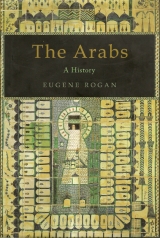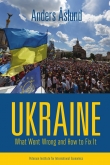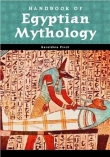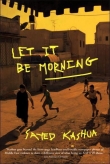
Текст книги "The Arabs: A History"
Автор книги: Eugene Rogan
Жанры:
Военная история
,сообщить о нарушении
Текущая страница: 1 (всего у книги 47 страниц)

This book is dedicated to
Richard Huia Woods Rogan
Introduction
On February 14—Valentine’s Day—2005, a massive car bomb killed former Lebanese prime minister Rafiq Hariri in central Beirut. Returning home from a session of Parliament, Hariri had followed a predictable route and was surrounded by a bustling motorcade that made him stand out in the city’s notorious traffic. The one-ton bomb left an enormous crater where the waterfront road had been and sheared the faзades off neighboring buildings. Twenty-one people died with Hariri—politicians, bodyguards, and drivers, along with innocent bystanders. Even by Beiruti standards, this was a spectacular assassination. Hariri was the richest, most powerful man in Lebanon. He built his fortune as a contractor in Saudi Arabia and returned home at the end of his country’s fifteen-year civil war (1975–1990) to become the architect of Lebanon’s postwar reconstruction. He entered politics and was named prime minister in 1992. He served ten of his remaining thirteen years at the head of Lebanon’s government. Hariri’s landmark project as prime minister was the reconstruction scheme for downtown Beirut. The revitalized central business district, he argued, would drive the economic regeneration of this once-thriving commercial center. The plan was controversial, and Hariri’s blithe indifference to conflicts of interest between his role as contractor in chief and head of government gave rise to well-founded accusations of corruption. Yet many Lebanese saw Hariri as their country’s only hope. He bankrolled much of the Lebanese government’s expenses from his personal wealth. He gave foreign investors—particularly wealthy Lebanese expatriates and Saudi royals—confidence to place their money in the shaky Lebanese economy. And from the rubble of civil war Beirut, an elegant city with modern infrastructure was beginning to emerge. In October 2004, Hariri tendered his resignation as prime minister to protest Syria’s interference in Lebanon’s politics. It was a dangerous move for a man who had made his political career in partnership with Damascus. The Syrians had first entered Lebanon in 1976 as part of an Arab League force to intervene in the Lebanese Civil War?and had exercised a stranglehold on Lebanese politics ever since. Though the Syrian government claimed to be upholding political stability in its fragile neighboring state, many Lebanese chafed under what they saw as a Syrian occupation. The turning point for Hariri was when the Syrian government forced the Lebanese Parliament to grant an unconstitutional three-year extension to President Emile Lahoud?s term. The Lebanese constitution allows for a single presidential term of six years. Everyone knew that Lahoud was Syria?s man. Syrian president Bashar al-Asad allegedly threatened Hariri, saying: ?Lahoud is me. If you want me out of Lebanon, I will break Lebanon.?1 Hariri knew the risks but decided to stand up to the Syrian pressures on this issue. He paid for that decision with his life. When Hariri was killed, his supporters took to the streets and pinned the blame squarely on the Syrians. The demonstrations grew larger and more assertive in the weeks following the assassination, culminating in a mass rally held in central Beirut one month after Hariri’s assassination, on March 14. One million Lebanese—one quarter of the country’s total population—converged on central Beirut to demand their independence from Syria. The protests and demonstrations developed into a popular movement that came to be known in Lebanon as the Independence Intifada and was dubbed the Cedar Revolution by the international media. It also gave rise to a political coalition united against Syria’s presence in Lebanon that came to be known as the March 14 Alliance. Domestic and international opposition grew so intense in the aftermath of Hariri’s assassination that Syria was forced to withdraw its 14,000 soldiers and all intelligence officers from Lebanese soil. The last Syrian troops left Lebanon on April 26, 2005. The Lebanese believed themselves on the threshold of a new age of independence and national cohesion. Even after its last troops had withdrawn, Syria continued to cast a long shadow over Lebanon. A number of Syria’s most outspoken critics from the March 14 movement were silenced by violent assassinations that were clearly intended to intimidate surviving members. Over the next two years, eight anti-Syrian figures, including four members of the Lebanese Parliament, were murdered in car bombings and gun attacks. For many, the callous assassinations of respected cultural and political figures brought to light the powerlessness of the Lebanese to protect themselves from outside forces. They raged against their impotence and demanded justice.
One of the first to be killed was the journalist and author Samir Kassir, who died in his booby-trapped Alfa Romeo as he drove to work on the morning of June 2, 2005. Writing in the Lebanese daily An-Nahar, Kassir was one of the leading voices of the anti-Syrian March 14 movement. Kassir saw Lebanon’s problems as a microcosm of the ills of the Arab world as a whole. Shortly before his death, Kassir had published a remarkable essay exploring what he termed the ?Arab malaise? of the twenty-first century. It reflected the disenchantment of Arab citizens with their corrupt and authoritarian governments. ?It?s not pleasant being Arab these days,? he observed. ?Feelings of persecution for some, self-hatred for others; a deep disquiet pervades the Arab world.? “Yet the Arab world hasn’t always suffered such a ‘malaise,’” he continued. He contrasted the twenty-first-century malaise with two historic periods in which the Arabs had attained, or aspired to attain, greatness. The first five centuries after the emergence of Islam, spanning the seventh to the twelfth centuries of the current era, was the age of the great Islamic empires that dominated world affairs. Arabs had an international presence stretching from Iraq and Arabia to Spain and Sicily. The era of early Islam is a source of pride to all Arabs as a bygone age when the Arabs were the dominant power in the world, but resonates in particular with Islamists, who argue that the Arabs were greatest when they adhered most closely to their Muslim faith. Kassir argued that the second era of Arab greatness, or at least of great expectations, began in the nineteenth century. “The cultural renaissance of the nineteenth century,” he wrote, “the famous nahda, illuminated many Arab societies.” The nahda shaped a distinctly secular modern culture in the Arab world in the twentieth century. “Egypt founded the world’s third-oldest film industry, while from Cairo to Baghdad and from Beirut to Casablanca painters, poets, musicians, playwrights and novelists shaped a new, living Arab culture.” Society began to change, education began to spread, and women emerged from behind the veil. The culture of the nahda also shaped Arab politics in the twentieth century, and as Arabs emerged from colonialism to independence they came to play a prominent role in world affairs. Kassir listed a number of noteworthy examples: “Nasser’s Egypt, for instance, one of the pillars of Afro-Asianism and the subsequent Non-Alignment movement; independent Algeria, the driving force of the entire African continent; or the Palestinian resistance which was called on to further the cause of democratic rights without succumbing to the ideology of victimhood now so prevalent.” Kassir, himself a secular nationalist, held the modernizing reforms of the nineteenth and twentieth centuries to be more relevant to the present day than the golden age of the first five centuries of Islam, and he described the nahda as an era “when Arabs could look to the future with optimism.” This is clearly no longer the case. The Arab world views the future with growing pessimism, and the secular vision no longer inspires the majority of the population. In any free and fair election in the Arab world today, I believe the Islamists would win hands down. Kassir then asked the hard questions: “How did we become so stagnant? How has a living culture become discredited and its members united in a cult of misery and death?”2 He posed questions that have troubled Arab intellectuals and Western policymakers alike in the post-9/11 age. Many in the West see the greatest threat to their security and way of life coming from the Arab and Islamic worlds, in what is now known as jihadi terror. They don?t understand that many in the Arab and Islamic worlds see the greatest threat to their security and way of life coming from the West. What should be apparent to both sides is that there is a real connection between Arab stagnation and frustration, on the one hand, and the terror threat that so preoccupies Western democracies, on the other. Western policymakers and intellectuals need to pay far more attention to history if they hope to remedy the ills that afflict the Arab world today. All too often in the West, we discount the current value of history. As political commentator George Will has written, “When Americans say of something, ‘That’s history,’ they mean it is irrelevant.” Nothing could be further from the truth. Indeed, Westerners need to pay far more attention to the way that history has been experienced and understood by the Arabs themselves. This could spare them not from repeating history so much as from repeating historic mistakes. To take but one example, over the centuries Western leaders have tried to present their invasions of the Arab world as liberations. When Napoleon invaded Egypt in 1798, he issued a proclamation to the Egyptian people to assure them of his good intentions before invading their land. “People of Egypt,” he asserted, “you will be told that I have come to destroy your religion; do not believe it! Reply that I have come to restore your rights, to punish the usurpers, and that I respect God, his Prophet, and the Qur’an.” So Napoleon would have the people of Egypt believe he was invading their country to liberate them and to promote Islam, rather than to advance French geostrategic interests over their British rivals. The people of Egypt were not so naпve. Cairo’s leading intellectual at the time was a man named al-Jabarti, who left a remarkable account of the French invasion. Al-Jabarti was derisive of Napoleon’s proclamation: “Saying ‘I have not come to you except for the purpose of restoring your rights from the hands of the oppressors’ is the first lie he uttered and a falsehood which he invented.” Al-Jabarti dismissed Napoleon’s profession of respect for Islam, its Prophet, and scripture as “a derangement of his mind, and an excess of foolishness.”3 The hollow echo of Napoleon’s reassurances can be heard in the proclamation of Lieutenant General Sir Stanley Maude when he entered Baghdad in March 1917 at the head of a British invasion force at the height of the First World War. Maude claimed his army had entered Mesopotamia to drive the Ottoman enemy from Arab lands. “Our armies do not come into your cities and lands as conquerors or enemies, but as liberators. Since the days of Hulagu [the Mongol leader who sacked Baghdad in 1258] your citizens have been subject to the tyranny of strangers . . . and your fathers and yourselves have groaned in bondage.” Maude went on to promise British assistance to the people of Iraq to achieve self-rule and prosperity so that “the people of Baghdad shall flourish.”4 There was no more substance to the British liberation of Baghdad in 1917 than there had been to the Napoleonic liberation of Egypt in 1798. Britain had already agreed to the partition of the Arab world with its wartime ally France in 1916. Maude was conquering lands Britain had every intention of adding to its empire. By 1920, frustration with Britain’s failure to deliver the promised self-rule gave rise to a nationwide insurgency. A lawyer in the town of Najaf published a short-lived newspaper called al-Istiqlal (“independence”). In October 1920, he reflected on Maude’s false promises: “We kept waiting for what we had been promised, only to see the [British] army officers strip us of our rights and eliminate our independence. So we resolved to demand our legitimate natural rights, and to remind the government to fulfill its promises in a legal and correct manner. The [British] officers responded with great repression, to undermine our efforts to secure our legitimate rights.”5 The Iraqi Revolt of 1920 was suppressed by the British with great violence. Iraq then was placed under direct British imperial rule for the next twelve years, and under informal British control until the overthrow of the Iraqi monarchy in 1958. By the time U.S. president George W. Bush was preparing to invade Iraq in 2003 to liberate its people from the tyranny of Saddam Hussein’s rule, the Arabs had heard it all before: the wolf of occupation dressed in the lamb’s fleece of liberation. It is bad enough to invade a people without insulting their intelligence. Iraqi journalist Muntadhar al-Zaidi reflected widespread anger when he threw his shoes at President Bush in a valedictory press conference in Baghdad in December 2008. “This is a farewell kiss, you dog!” al-Zaidi shouted as he threw his first shoe. “This is from the widows, the orphans and those who were killed in Iraq,” he added, throwing his second shoe. Though he was subsequently arrested and tried by the Iraqi authorities for his act, al-Zaidi became an overnight hero across the Arab world for telling the most powerful man in the world that the Iraqis knew the difference between liberation and occupation. Al-Zaidi’s outburst, and Arab sympathy for his actions, revealed a profound sense of anger and frustration—that the Iraqis had neither been able to rid themselves of a tyrant like Saddam on their own nor were able to prevent foreigners from invading Iraq to do so for their own reasons. This was the kind of impotence Samir Kassir had in mind when writing about the Arab malaise: “The Arab people are haunted by a sense of powerlessness . . . powerlessness to suppress the feeling that you are no more than a lowly pawn on the global chessboard even as the game is being played in your backyard.”6 Unable to achieve their aims in the modern world, the Arabs see themselves as pawns in the game of nations, forced to play by other peoples’ rules. This is not an entirely new phenomenon. The Arabs have negotiated the modern age largely by the rules set by the dominant powers of the day. In this sense, modern Arab history begins with the Ottoman conquest of the Arab world in the sixteenth century, when the Arabs first came to be ruled by an external power. The European imperial powers and the superpowers of the Cold War era each perpetuated the subordination of the Arab world to outside rules. After five centuries of playing by other peoples? rules, the Arabs aspire to mastery over their own destiny?such as they had enjoyed in the first five centuries of Islam. Most Arabs today would say they have never been farther from realizing that ambition.
Viewing Arab history through the prism of the dominant rules of the age yields four distinct periods in modern times: the Ottoman era, the European colonial era, the era of the Cold War, and the present age of U.S. domination and globalization. The trajectory of Arab history across these different periods has been marked by peaks and troughs of greater and lesser sovereignty and independence of action. For to say that the Arab world has been subject to foreign rules does not mean the Arabs have been passive subjects in a unilinear history of decline. Arab history in the modern age has been enormously dynamic, and the Arab peoples are responsible for their successes and failures alike. They have worked with the rules when it suited them, subverted the rules when they got in the way, and suffered the consequences when they crossed the dominant powers of the day. Indeed, the Arabs were always most empowered when there was more than one dominant power to the age. In the colonial era, the Arabs took every opportunity to play the British off the French, as they tried to play the Soviets off the Americans during the Cold War. But with each historic watershed, leading to the fall of the dominant power(s) and the rise of a new world order, the Arabs were driven back to the drawing board until they had mastered the new rules of the age. The moments of transition always heralded a new opening or opportunity, though experience has shown that the impulse of foreign powers to dominate the region becomes more pronounced with each new age.
Modern Arab history begins with the Ottoman conquests of 1516–1517, during which a modern gunpowder army with muskets defeated a medieval army wielding swords. The conquests established Ottoman power across the Arab lands until the end of the First World War. They also represented the beginning of Arab history as played by other people’s rules. Until this point, the Arabs had been ruled from their own great cities—Damascus, Baghdad, and Cairo. Under the Ottomans, the Arabs were ruled from distant Istanbul, a city spanning the two continents of Europe and Asia astride the Straits of the Bosporus. The Ottomans ruled the Arabs for four of the past five centuries. Over this expanse of time the empire changed, and the rules changed accordingly. In the first century after the conquest, the Ottoman rules were none too demanding: the Arabs had to recognize the authority of the sultan and respect the laws of both God (sharia, or Islamic law) and the sultan. Non-Muslim minorities were allowed to organize their own affairs, under their own communal leadership and religious laws, in return for paying a poll tax to the state. All in all, most Arabs seemed to view their place in the dominant world empire of the age with equanimity as Muslims in a great Muslim empire. In the eighteenth century, the rules changed significantly. The Ottoman Empire had reached its zenith during the seventeenth century, but in 1699 suffered its first loss of territory—Croatia, Hungary, Transylvania, and Podolia, in the Ukraine—to its European rivals. The cash-strapped empire began to auction both state office and provincial agricultural properties as tax farms to generate revenues. This allowed powerful men in remote provinces to amass vast territories through which they accumulated sufficient wealth and power to challenge the authority of the Ottoman government. Such local lords emerged in the Balkans, in Eastern Anatolia, and across the Arab provinces. In the second half of the eighteenth century a string of such local leaders posed a grave challenge to Ottoman rule in Egypt, Palestine, Lebanon, Damascus, Iraq, and Arabia. By the nineteenth century the Ottomans had initiated a period of major reforms intended to quell the challenges from within the empire and to hold at bay the threats of their European neighbors. This age of reforms gave rise to a new set of rules, reflecting novel ideas of citizenship imported from Europe. The Ottoman reforms tried to establish full equality of rights and responsibilities for all Ottoman subjects—Turks and Arabs alike—in such areas as administration, military service, and taxes. They promoted a new identity, Ottomanism, which sought to transcend the different ethnic and religious divides in Ottoman society. The reforms failed to protect the Ottomans from European encroachment but did allow the empire to reinforce its hold over the Arab provinces, which took on greater importance as nationalism eroded the Ottoman position in the Balkans. Yet, the same ideas that inspired the Ottoman reforms gave rise to new ideas of nation and community, which made some in the Arab world dissatisfied with their position in the Ottoman Empire. They began to chafe against Ottoman rules that increasingly were blamed for the relative backwardness of the Arabs at the start of the twentieth century. Contrasting past greatness with present subordination within an Ottoman Empire that was retreating before stronger European neighbors, many in the Arab world called for reforms within their own society and aspired to Arab independence from the Ottoman world. The fall of the Ottoman Empire in 1918 seemed to many in the Arab world the threshold of a new age of independence and national greatness. They hoped to resurrect a greater Arab kingdom from the ashes of the Ottoman Empire, and they took heart from U.S. president Woodrow Wilson’s call for national self-determination as set out in his famous Fourteen Points. They were to be bitterly disappointed, as they found that the new world order would be based on European rather than Wilsonian rules. The British and French used the Paris Peace Conference of 1919 to apply the modern state system to the Arab world, with all Arab lands bar central and southern Arabia falling under some form of colonial rule. In Syria and Lebanon, newly emerging from Ottoman rule, the French gave their colonies a republican form of government. The British, in contrast, endowed their Arab possessions in Iraq and Transjordan with the trappings of the Westminster model of constitutional monarchy. Palestine was the exception, where the promise to create a Jewish national home against the opposition of the indigenous population undermined all efforts to form a national government. Each new Arab state was given a national capital, which served as the seat of government. Rulers were pressed to draft constitutions and to create parliaments that were elected by the people. Borders, in many cases quite artificial, were negotiated between neighboring states, often with some acrimony. Many Arab nationalists opposed these measures, which they believed divided and weakened an Arab people that could only regain its rightful status as a respected world power through broader Arab unity. Yet in keeping with the European rules, meaningful political action was confined to the borders of the new Arab states. One of the enduring legacies of the colonial period is the tension between nation-state nationalism (e.g., Egyptian or Iraqi nationalism) and pan-Arab nationalist ideologies. National movements emerged in the first half of the twentieth century within individual colonial states in opposition to foreign rule. No meaningful Arab-wide nationalist movement was possible so long as the Arab world was divided between Britain and France. And by the time the Arab states began to secure their independence from colonial rule in the 1940s and 1950s, the divisions between Arab states had become permanent. The problem was that most Arab citizens believed smaller nationalisms based around colonial creations were fundamentally illegitimate. For those who aspired to Arab greatness in the twentieth century, only the broader Arab nationalist movement offered the prospect of achieving the critical mass and unity of purpose necessary to restore the Arabs to their rightful place among the powers of the day. The colonial experience left the Arabs as a community of nations rather than a national community, and the Arabs remain disappointed by the results.
European influence in world affairs was shattered by the Second World War. The postwar years were a period of decolonization as the states of Asia and Africa secured independence from their former colonial rulers, often by force of arms. The United States and the Soviet Union emerged as the dominant powers in the second half of the twentieth century, and the rivalry between them defined the rules of the new age, which came to be called the Cold War. It was then that Moscow and Washington entered into an intense competition for global dominance. As the United States and the USSR attempted to integrate the Arab world into their respective spheres of influence, the Middle East became one of several arenas of superpower rivalry. Even in that age of national independence, the Arab world found its room to maneuver constrained by outside rules—the rules of the Cold War—for nearly half a century (from 1945 to 1990). The rules of the Cold War were straightforward: a country could be an ally of the United States, or of the Soviet Union, but could not have good relations with both. The Arab people generally had no interest in American anticommunism or Soviet dialectical materialism. Their governments tried to pursue an intermediate path through the Non-Aligned Movement—to no avail. Eventually, every state in the Arab world was forced to take sides. Those states that entered into the Soviet sphere of influence called themselves “progressives” but were described in the West as “radical” Arab states. This group included every Arab country that had undergone a revolution: Algeria, Libya, Egypt, Syria, Iraq, and South Yemen. Those Arab states that sided with the West—the liberal republics like Tunisia and Lebanon, and conservative monarchies like Morocco, Jordan, Saudi Arabia, and the Gulf States—were dubbed “reactionaries” by the progressive Arab states but were considered “moderates” in the West. These labels came to be used by Western journalists and policymakers alike. What followed were patron-client relations, in which Arab states secured arms for their military and development aid for their economies from their superpower patrons. Arab states proved able participants in the Cold War, deploying a range of weapons in a bid to level the playing field with the superpowers. In the 1950s and 1960s the Arabs placed their faith in the politics of Arab nationalism. However, repeated defeats to Israel and the death of Egyptian president Gamal Abdel Nasser undermined the movement’s credibility. In the 1970s some Arab states used their oil resources to gain leverage in international affairs. In the 1980s many in the Arab world turned to the politics of Islam to provide strength and unity against external powers. None of these strategies liberated the Arab world from the rules of the Cold War. So long as there were two superpowers, there were checks and balances in the system. Neither the Soviets nor the Americans could afford to take unilateral action in the region for fear of provoking a hostile reaction from the other superpower. Analysts in Washington and Moscow lived in fear of a third world war and worked day and night to prevent the Middle East from sparking such a conflagration. Arab leaders also learned how to play the superpowers off each other, using the threat of defection to secure more arms or development aid from their patron state. Even so, by the end of the Cold War the Arabs were well aware that they were no closer to achieving the degree of independence, development, and respect they had aspired to at the start of the era. With the collapse of the Soviet Union, the Arab world was to enter a new age?on even less favorable terms.
The Cold War came to an end shortly after the fall of the Berlin Wall in 1989. For the Arab world, the new unipolar age began with the Iraqi invasion of Kuwait in 1990. When the Soviet Union voted in favor of a UN Security Council resolution authorizing a U.S.-led war against the Kremlin’s old ally Iraq, the writing was on the wall. The certainties of the Cold War era had given way to an age of unconstrained American power, and many in the region feared the worst. The rules of the new age of American dominance are perhaps the hardest to define. Three U.S. presidents pursued very different policies in the 1990s and the first decade of the twenty-first century. For George H. W. Bush, who was in office as the Soviet Union collapsed, the end of the Cold War marked the beginning of a new world order. Under Bill Clinton, internationalism and engagement remained the hallmarks of U.S. policy. But with the advent of the neoconservatives to power following the election of George W. Bush in 2000, the United States turned to unilateralism. In the aftermath of the September 11, 2001, attacks in the United States, these policies had a devastating impact on the region as a whole, leading to a war on terrorism that focused on the Muslim world, with the Arabs as prime suspects. Arguably, the rules have never been more disadvantageous to the Arab world than they are today. Aside from the Arab Gulf states, which have negotiated the new era of American domination to achieve remarkable economic growth and political stability for their citizens, the post–Cold War era has been marked by violence and instability in the Middle East. Prospects for the future in the Arab world have never caused more pessimism—at home, in the region, or internationally. As Samir Kassir said with characteristic restraint: “It’s not pleasant being Arab these days.” 
It would be wrong, however, to emphasize the tensions in Arab history to the detriment of all that makes the Arab world so fascinating. As a lifelong student of the Middle East, I was drawn to Arab history because it is so rich and diverse. Following my childhood in Beirut and Cairo, I took my interests in the Middle East to university in the United States, where I studied Arabic and Turkish to enable me to read the primary sources of Arab history. Reading court records and chronicles, archival documents and manuscripts, histories and memoirs, I was equally struck by the familiar and the exotic in Arab history. So much of what the Arab world has undergone in the past five centuries is common to human experience around the globe. Nationalism, imperialism, revolution, industrialization, rural urban migration, the struggle for women?s rights?all the great themes of human history in the modern age have played out in the Arab world. Yet, there are many things that make the Arabs distinct: the shape of their cities, their music and poetry, their special position as the chosen people of Islam (the Qur?an stresses no less than ten times that God bestowed His final revelation on humankind in Arabic), their notion of a national community stretching from Morocco through Arabia. Bound by a common identity grounded in language and history, the Arabs are all the more fascinating for their diversity. They are one people and many peoples at the same time. As the traveler moves across North Africa from Morocco to Egypt, the dialect, calligraphy, landscape, architecture, and cuisine—as well as the form of government and types of economic activity—transform in a constantly changing kaleidoscope. If the traveler continues through the Sinai Peninsula into the Fertile Crescent, similar differences arise between Palestine and Jordan, Syria and Lebanon, and Iraq. Moving south from Iraq to the Gulf States, the Arab world shows influences of nearby Iran. In Oman and Yemen, the influences of East Africa and South Asia are apparent. All of these peoples have their own, distinct history, but they all see themselves bound by a common Arab history. In writing this book, I have tried to do justice to the diversity of Arab history by balancing the experiences of North Africa, Egypt and the Fertile Crescent, and the Arabian Peninsula. At the same time, I have tried to show the linkages between the histories of these regions—for example, how French rule in Morocco influenced French rule in Syria, and how rebellion against French rule in Morocco influenced rebellion against French rule in Syria. Inevitably, some countries take up more than their fair share of the narrative, and others are woefully neglected, which I regret. I have drawn on a wide range of Arab sources, using eyewitness accounts of those who lived through the tumultuous years of Arab history: chroniclers in the earlier periods give way to a wide range of intellectuals, journalists, politicians, poets, and novelists, men and women famous and infamous. It has seemed only natural to me to privilege Arab sources in writing a history of the Arabs, much as one might privilege Russian sources to write a history of the Russians. The authoritative foreigner—statesmen, diplomats, missionaries, and travelers—have valuable insights to share on Arab history. But I believe Western readers would view Arab history differently were they to see it through the eyes of Arab men and women who described the times through which they lived.








